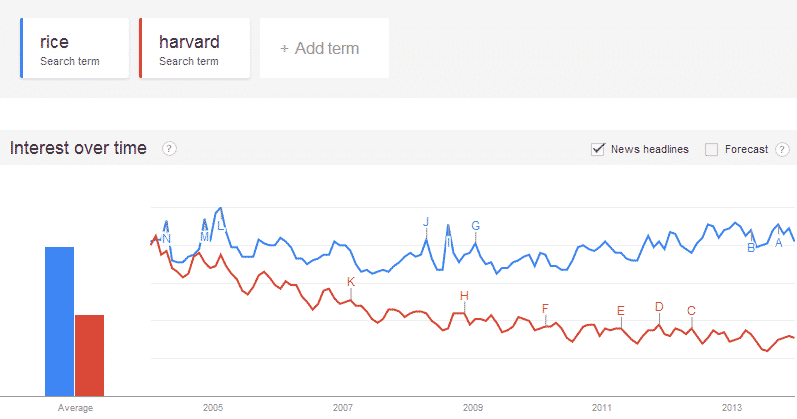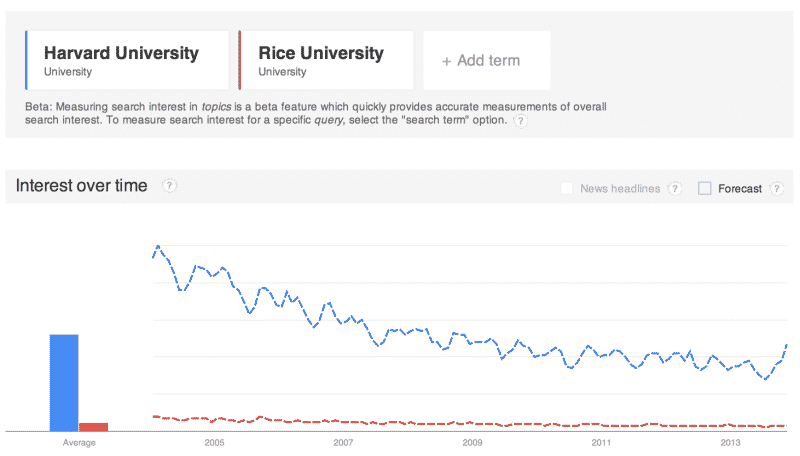Google Trends shows how often a particular search-term is entered relative to the total search-volume across various regions of the world, and in various languages. Lately Google has updated its Google Trends service. Now, Google Trends offers topic predictions and groups searches for 700,000 topics in 7 countries.
Google Trends has always been interesting and fun. The horizontal axis of the main graph of Google Trends represents time, while the vertical is how often a term is searched for relative to the total number of searches, globally. Below the main graph, popularity is broken down by countries, regions, cities and language. But earlier “language” could not display the relative results of searches in different languages for the same term(s). It used to display the relative combined search volumes from all countries that share a particular language. For example, in the past, if a user wanted to compare search interest in Rice (Rice University, not the cereal) and Harvard, he/might get a report something like this.
But now Google has updated its Google Trends service. Google Trends will automatically give you type-ahead search suggestions that are based on topics, not keywords. This means you can now easily tell Google what trend you are looking for. For example, a user types in “rice” into the search box, he/she will see predictions for “Rice University (University)” and “Rice (Cereal)” and from there he/she can choose desire trend.
Google has mentioned that its Google Trends now understands “700,000 unique topics,” ranging from Barack Obama to football (soccer) to Hayao Miyazaki, can easily measure search interest in people, places, and things; and offers topic predictions and groups searches within those 700,000 topics in 7 countries. This new system is also more forgiving when it comes to misspellings.
The new feature is currently in beta stage and is available only in Brazil, France, Germany, India, Italy, the UK, and the US, for now. keep an eye on us to know when it comes out of beta and rolls out globally.
Source: Google Inside Search (Blog)
[ttjad]





